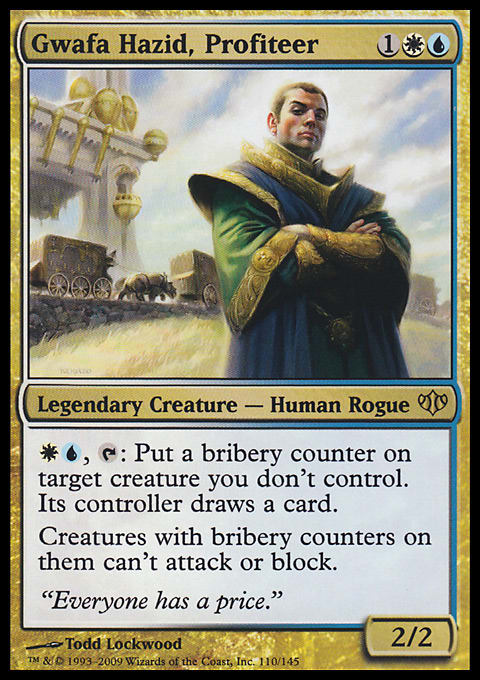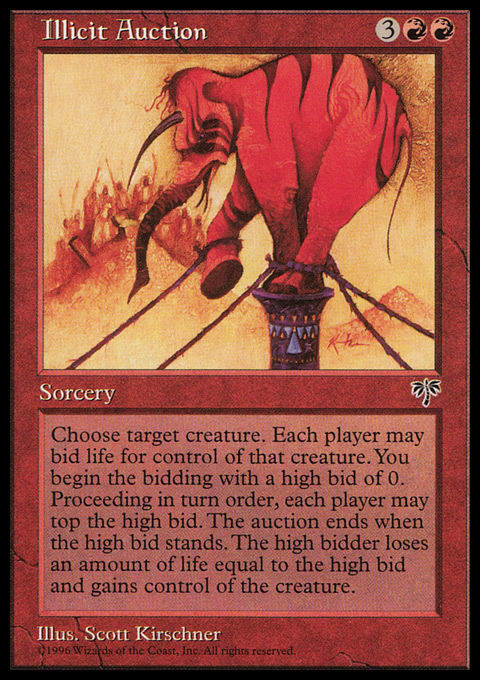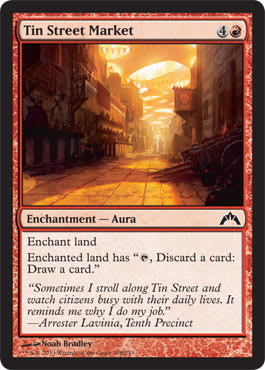As I sit here typing this from our hotel room in Flagstaff, I realize just how different the financial game can be for each and every person. With all the different approaches to moneymaking in this industry, it is hard to master each approach and even more difficult to keep inventories organized. I use buy lists as my main outlet for cards while others use auction or retail sites. I want to expand on last week’s article and go more in depth on each outlet, but as I do not use each, I decided to call upon some of my cohosts this week to enlighten everyone on some of the ways they sell.
Buy Lists and BidWicket – Ryan Bushard
As I mentioned, I utilized buy lists and tools such as BidWicket.com to maximize my turnover. This may not be the best way to find the best margins, but you can move through large quantities of cards with very little effort. BidWicket is a great resource that can allow you to create listed boxes that can be easy for vendors at large events to go through quickly. Buyers are much more likely to go through cards if you have them sorted and organized by price, as you save them the hassle of looking up each card. After you run a box through the vendor alley, you should be left with a very limited number of cards, which you can then lower the price on or hold until the next show.
If you are not able to visit larger events regularly, you can still organize and even buy-list directly from BidWicket, creating a cart for each vendor, making a streamlined checkout. I usually avoid shipping items if I can help it since conditioning through the mail is much harsher than in person, but if you have to mail in cards, it is important to learn which vendors condition the hardest. Some cards may be slightly less to one site, but if you know they are less strict on grading, it may be better to ship anything slightly played to them.
If you are fortunate enough to visit large events and sell to larger vendors on a regular basis, there are slightly different strategies I employ. First and foremost, create a lasting impression with the vendors you plan on selling to regularly. I have a good reputation with a number of major vendors, which has a number of perks when I sit down to sell. I find myself receiving better prices due to the larger quantities of cards I move while also having a far more enjoyable time engaging in conversation with many of the buyers whom I consider friends. Creating these relationships also means when you do go to ship cards, your order may be given preferential treatment whether it be graded less heavily or paid out quicker.
Working with vendors rather than viewing the retailer as the enemy also allows you access to some inside information during Grands Prix or other large events. Before each weekend begins, I am usually sent buy lists in advance, allowing me to gather cards from home knowing, what I can be paid on them in person. Along with these advance lists, I also pick vendors’ ears about what cards are hot that weekend or what items they are paying very well on. With all this extra information, you can really create a far better experience and find yourself coming close to or even matching prices with people who use auction or player-based sites, such as TCGplayer, with far less work.
This approach may not be for everyone, as it requires access to a larger number of cards than most can acquire, but if you have a local area that moves through cards quickly or are able to pick up collections regularly, buy-listing may be your best approach. I can’t give away all of my secrets, of course, but you will be amazed how vendors are willing to work with you if you give them a reason to. Next time you are selling to a guy behind a booth, strike up a conversation; you might be surprised that the guy buying your cards is more than just an ATM.
eBay – Jason Alt
There just has to be a happy medium between giving your cards away at buy list prices and owning your own brick-and-mortar retail outlet, hasn’t there? Having an out where you can come close to selling for retail means that you can pay the buy-list prices and still be able to take a bite because you’re getting close to retail. But if you don’t own a retail outlet, how are you going to be able to sell for retail? One of the several options that have worked for me is to sell on eBay.
Most of us have experience either buying or selling on eBay. For the “casual” eBay seller who cracks a foil ’Goyf and says, “Nuts to buy-listing this for forty percent of its value,” eBay is a complicated labyrinth filled with hidden fees, sweating the final price of an auction and hoping the seller isn’t trying to scam you. However, if you plan to move a few hundred dollars a month (if this sounds like a lot to you, just think of how long it would take to make $200 selling $20 cards instead of buy-listing them for $8) or more, eBay is a fantastic out because you have the option of establishing an eBay store.
The benefits of the store are myriad, but I will give you a few big ones that make this an attractive option.
- The store software is easy to set up and decently customizable.
- eBay stores receive much better customer service from eBay—this is an actual benefit; trust me.
- You pay much lower fees than nonstores.
- You list from five hundred to a thousand items for free every month and pay less per listing after.
- Power Seller and Top-Rated Seller statuses lower your fees further.
It’s tricky to compare the benefits of eBay over TCGplayer because a lot of the math being done ignores an eBay store and just looks at the cost of some random selling a few cards on the ’Bay. If you plan to move a decent number of items (I moved thousands in the last year alone), being able to list at least five hundred a month allows you to list cards that may take a while to sell (foreign foil stuff is a great example) and not have to worry about it costing you money as it sits up.
eBay works hand-in-hand with PayPal, so you are paid much faster than with buy-listing or with TCGplayer, and PayPal will send you a debit card, which is insanely handy. PayPal also makes it easy to print shipping labels and automatically pay for postage at time of printing. The system is streamlined, eBay gives you thousands of eyes on every listing, you are paid quickly and easily, people who move a lot of product enjoy lower fees, and it keeps growing easier to list stuff on there. If you plan to sell more than ten items or so a month, I think establishing an eBay store is a good option, and it’s worked quite well for me.
TCGplayer – Corbin Hosler
As Jason mentioned, eBay can be a nice medium between buy lists and retail. And while it’s a great outlet if you do a lot of business or need to make sure something sells in a week, it isn’t always the best option.
TCGplayer.com is nothing new to most of you. It’s a site where many stores go to sell cards. But what not everyone may know is that they also now allow individual sellers, which means you can list a card on there almost as easily as a large store.
Using the foil ’Goyf example, maybe you open one in your Modern Masters packs and want to get rid of it at a certain price. You can’t guarantee you’ll earn that price from an eBay auction, and you certainly won’t get it from a dealer.
That’s where TCGplayer comes in handy. For the average player who sells just a few cards, TCGplayer fees are lower than eBay’s for anything over $5 or so. The system is very user-friendly, and there’s been plenty of working going on behind the scenes to make it even easier to sell your cards. That includes faster payment and easier ways to list.
There are different levels of sellers on TCGplayer. The first level allows you list just ten cards, which helps protect buyers—but also you—from becoming overwhelmed. As you make more sales, you advance in level, allowing you to list more and gain more control over your listings. I use TCGplayer sometimes to move casual cards that don’t appear on the buy lists for quite as much as I want. Because I know casual cards such as Deathbringer Liege aren’t going to suddenly fluctuate in price like a Standard-playable card might, I’m in no rush to sell it, so I can wait for the price I want.
The most important thing to note about this outlet is that nothing is guaranteed to sell. While an eBay auction will always end when you want it to (at whatever price it ends up hitting), stuff can sit on TCGplayer for a long time. This is both a good and a bad thing. If you need to move something fast, it’s probably not for you, but if you want to be paid a certain number on something and don’t have to get rid of it right away, TCGplayer fills the niche quite nicely.
I want to thank my co-hosts and fellow road warriors for throwing their hats in the ring this week and sharing their knowledge. If you don’t already follow these guys on Twitter, you should be, as they both tweet regularly about the MTG financial world. Thank you as always for reading this week’s financial column, and if you have any questions for any of us, leave a comment below. Join me next week as I recap the road trip and talk about just how awesome Vegas was and what financial changes occurred.
Ryan Bushard
Jason Alt
Corbin Hosler























